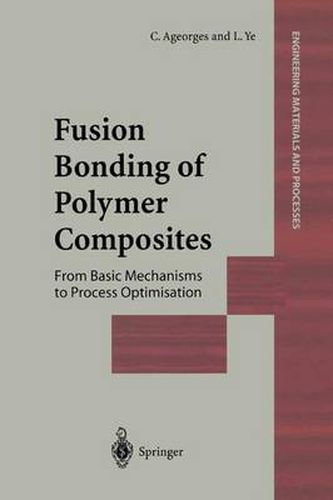Readings Newsletter
Become a Readings Member to make your shopping experience even easier.
Sign in or sign up for free!
You’re not far away from qualifying for FREE standard shipping within Australia
You’ve qualified for FREE standard shipping within Australia
The cart is loading…






This title is printed to order. This book may have been self-published. If so, we cannot guarantee the quality of the content. In the main most books will have gone through the editing process however some may not. We therefore suggest that you be aware of this before ordering this book. If in doubt check either the author or publisher’s details as we are unable to accept any returns unless they are faulty. Please contact us if you have any questions.
Fusion bonding is one of the three methods available for joining composite and dissimilar materials. While the other two, mechanical fastening and adhesion bonding, have been the subject of wide coverage both in textbooks and monographs, fusion bonding is covered here substantially for the first time. Fusion bonding offers a number of advantages over traditional joining techniques and it is anticipated that its use will increase dramatically in the future because of the rise in the use of thermoplastic matrix composites and the growing necessity for recyclability of engineering assemblies. Fusion Bonding of Polymer Composites provides an in-depth understanding of the physical mechanisms involved in the fusion bonding process, covering such topics as:- heat transfer in fusion bonding;- modelling thermal degradation;- consolidation mechanisms;- crystallisation kinetics;- processing-microstructure-property relationship;- full-scale fusion bonding;- fusion bonding of thermosetting composite/thermoplastic composite and metal/thermoplastic joints.The book focuses on one practical case study using the resistance welding process. This example exposes the reader to the development of processing windows for a novel manufacturing process including the use of experimental test programmes and modelling strategies.
$9.00 standard shipping within Australia
FREE standard shipping within Australia for orders over $100.00
Express & International shipping calculated at checkout
This title is printed to order. This book may have been self-published. If so, we cannot guarantee the quality of the content. In the main most books will have gone through the editing process however some may not. We therefore suggest that you be aware of this before ordering this book. If in doubt check either the author or publisher’s details as we are unable to accept any returns unless they are faulty. Please contact us if you have any questions.
Fusion bonding is one of the three methods available for joining composite and dissimilar materials. While the other two, mechanical fastening and adhesion bonding, have been the subject of wide coverage both in textbooks and monographs, fusion bonding is covered here substantially for the first time. Fusion bonding offers a number of advantages over traditional joining techniques and it is anticipated that its use will increase dramatically in the future because of the rise in the use of thermoplastic matrix composites and the growing necessity for recyclability of engineering assemblies. Fusion Bonding of Polymer Composites provides an in-depth understanding of the physical mechanisms involved in the fusion bonding process, covering such topics as:- heat transfer in fusion bonding;- modelling thermal degradation;- consolidation mechanisms;- crystallisation kinetics;- processing-microstructure-property relationship;- full-scale fusion bonding;- fusion bonding of thermosetting composite/thermoplastic composite and metal/thermoplastic joints.The book focuses on one practical case study using the resistance welding process. This example exposes the reader to the development of processing windows for a novel manufacturing process including the use of experimental test programmes and modelling strategies.